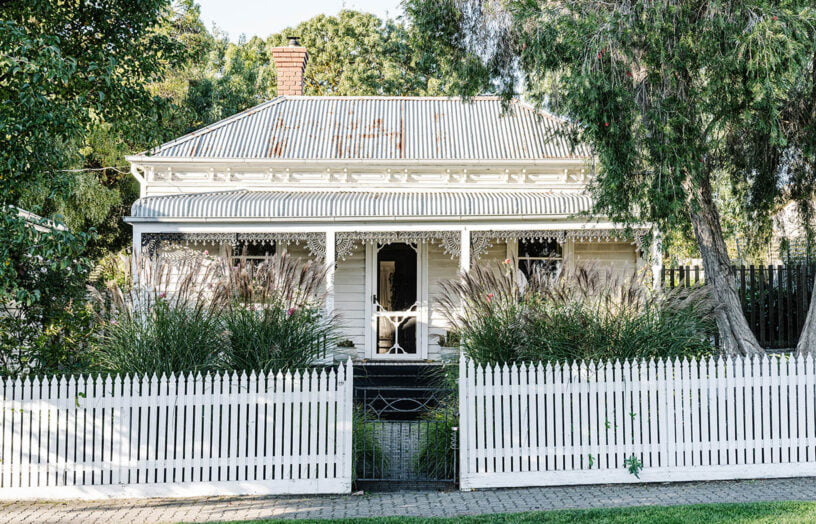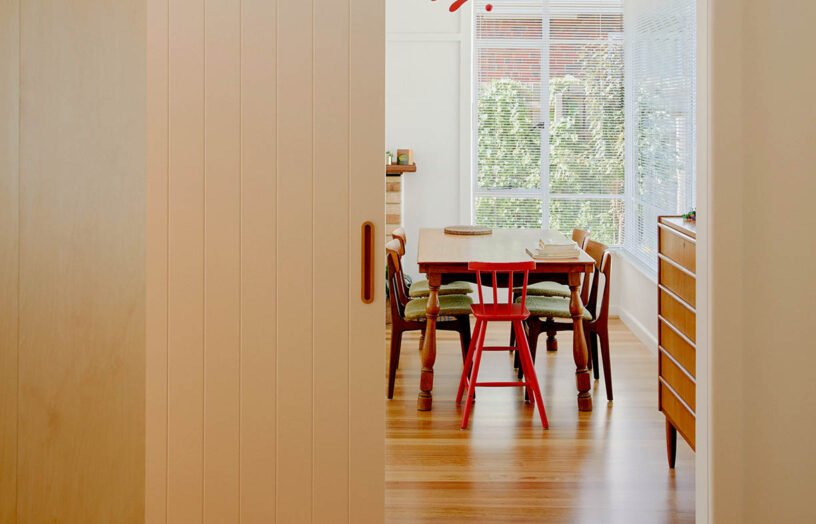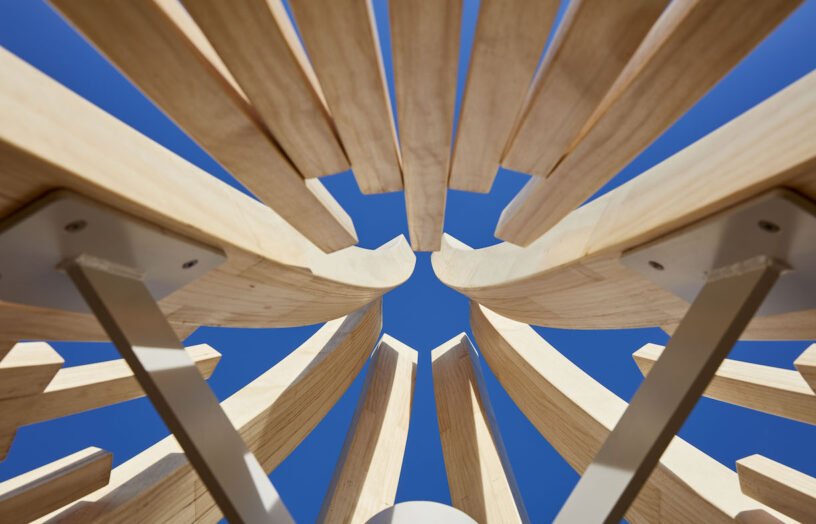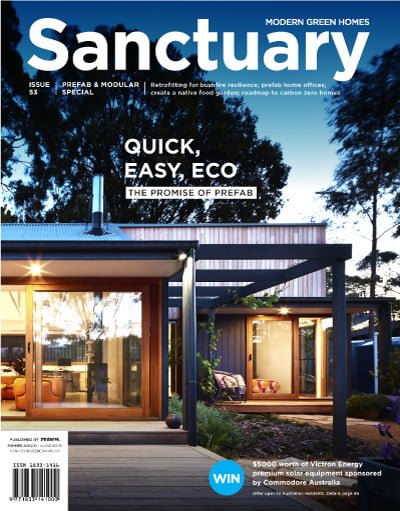Sanctuary 53 out now: Prefab and modular special

This issue, we profile a collection of sustainable homes that make the most of prefabricated and modular construction. We also look at retrofitting homes for bushfire resilience and present a roadmap for carbon zero homes, plus much more.
While the prefabricated and modular industry still occupies a relatively small share of the Australian residential construction market, it continues to gain momentum and attract interest – particularly for its potential to deliver high-performing homes while cutting building time and minimising waste. And with many people responding to pandemic lockdowns and increased working from home by making the move out of our cities, prefab has promise for quick, easy and sustainable builds on their new blocks.
Among our climate-resilient house profiles this issue we feature a collection of six homes that make the most of this constantly innovating construction method. They range from an elevated granny flat built without disturbing an established garden, to an inner Melbourne infill house delivered as four stacked modules, and an off-grid home on a beautiful site near Jindabyne in the Snowy Mountains. There’s a small family house on New Zealand’s North Island that was designed with Passive House principles in mind and erected on site in just four days using flatpacked panels. And on our cover, a ‘kit of parts’ prefab construction approach was the answer for this lovely, affordable custom designed house on the Victorian coast. Also, for those now working from home more permanently or just needing a little more space, we explore what prefab has to offer for comfortable and energy-efficient home offices and studios.
Also in this issue …
It’s summer again, with much of the country bracing for the possibility of bushfire. We bring you two articles from bushfire design experts: Nigel Bell explains what you can do to retrofit your existing home to increase its chances of surviving a bushfire, and in our Design Workshop, Ian Weir gives a Kangaroo Island resident some advice on how to create a fire resilient sanctuary that still makes the most of the views. Following hot on the heels of architects and engineers, Australian builders have banded together to form Builders Declare a Climate & Biodiversity Emergency. In this issue, founding member Jeremy Spencer explains the movement’s core mission to make carbon zero homes mainstream and presents a simple roadmap for getting there.
Elsewhere, in On the drawing board Tasmanian designers Michael Shrapnel and Agnes Nienhaus write about the creative process behind a design for a quirky, sustainable off-grid home repurposing buildings from an old film set. And we take a look at how easy it is to create a native food kitchen garden at home, no matter the size of your space – plus much more.
Sanctuary 53 is on its way to subscribers and on sale in newsagents now. You can buy a copy online or subscribe to get every issue delivered.
We welcome your feedback. Perhaps there’s something else you would you like to see in Sanctuary? Let us know on Facebook, Twitter, Instagram or by email.
Latest articles
 Ideas & Advice
Ideas & Advice
Case study: 130-year-old cottage goes modern electric
Not sure where to start on the electrification journey? Working with a one-stop shop can help streamline the conversion from a gas to an electric home, as Marnie and Ryan discovered.
Read more House profiles
House profiles
Like a charm
A smart renovation vastly improved functionality and sustainability in this small Melbourne home, keeping within the original footprint and retaining the cute period character.
Read more Ideas & Advice
Ideas & Advice
In praise of Accoya
Native hardwoods are beautiful, strong and durable, but we need to wean ourselves off destructive forestry practices. Building designer and recreational woodworker Dick Clarke takes one hardwood alternative for a test run.
Read more

